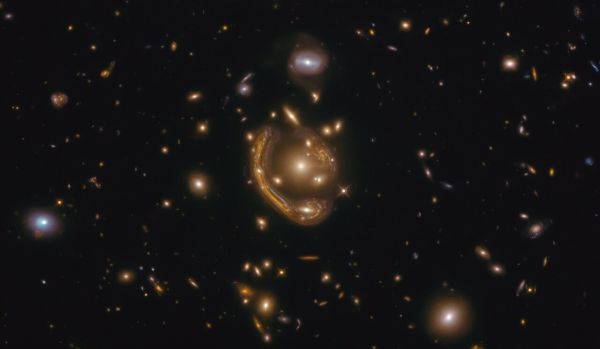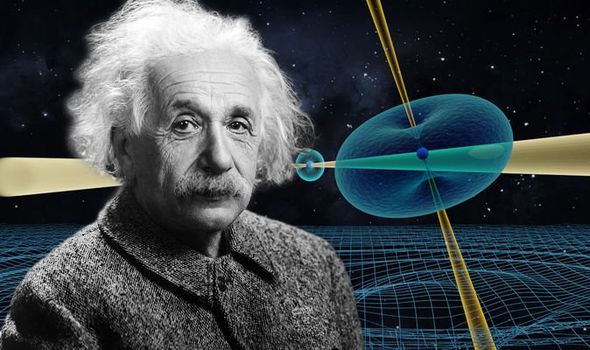Space-Time Distortions Pose the Ultimate Challenge to Einstein’s Theory of Relativity
Observing time distortions could show whether Einstein’s theory of general relativity accounts for the mysteries of dark matter and dark energy.
Scientists have developed a new method to test Einstein’s theory of general relativity by examining the distortion of time. This method, outlined in a recent study published in Nature Astronomy, utilizes the vast expanse of space and time as a cosmic laboratory to investigate the relationship between general relativity, dark matter, and dark energy.
By measuring the gravitational influence of dark matter on visible matter and energy, as well as the accelerating expansion of the universe caused by dark energy, researchers hope to gain further insights into the validity of general relativity.
This innovative approach is set to be tested in future surveys of the deep universe, as stated by the authors of the study. General relativity, formulated by Einstein in 1915, explains gravity as the result of mass warping the fabric of space and time. It suggests that time passes more slowly near massive objects compared to a mass-less vacuum, a phenomenon known as time distortion.
While general relativity has been extensively tested and is currently our most accurate description of gravity on large scales, it has yet to fully account for the enigmatic dark matter and dark energy, which make up a significant portion of the universe’s energy and matter. The proposed method aims to measure time distortion at vast distances, complementing previous precise measurements conducted at smaller scales. This research opens up new possibilities for advancing our understanding of the fundamental forces shaping the cosmos.
The approach proposes to examine time distortion by gauging redshift, which refers to the alteration in the frequency of light emitted by an object as it moves away from us. Bonvin explained that the key distinction lies in this method’s ability to measure redshift caused by light endeavoring to ascend from a gravitational well, which is essentially a deformation in the fabric of space-time caused by a massive object.
“This ascent leads to a modification in the light’s frequency due to the varying passage of time inside and outside the gravitational well,” she elaborated. “Consequently, the light’s color undergoes a change; it shifts towards the red end of the spectrum. … By quantifying gravitational redshift, we can derive a measurement of the time distortion.”

Time to test general relativity
Time distortion is a concept that suggests that time is not fixed in our universe, but rather passes at different rates depending on the strength of gravitational fields. This idea is not limited to general relativity, as it exists in all modern theories of gravity. However, the extent to which time is distorted varies from theory to theory.
In the theory of general relativity, the distortions of time and space are predicted to be equal. However, this is not always the case in other theories of gravity. By measuring the distortion of time and comparing it to the distortion of space, physicists can assess the validity of general relativity.
The team’s new method also has the potential to test Euler’s formula, a leading theory used by astronomers to calculate the movement of galaxies. Specifically, their proposed measurement of time distortion could determine whether dark matter follows Euler’s equation, as previous studies have assumed.
Direct observation of dark matter particles has not yet been achieved. Its presence is only detected through its gravitational effects. Consequently, it is uncertain whether dark matter adheres to the Euler equation. It is possible that dark matter is influenced by additional forces or interactions in our universe beyond gravity. If this is true, then dark matter would not conform to the Euler equation.
The team’s method could be utilized in future missions, such as the European Space Agency’s Euclid telescope, scheduled for launch in July, and the Dark Energy Spectroscopic Instrument, currently three years into its five-year survey of the universe.
Bonvin stated that the data provided by these surveys will enable us to quantify the time distortion. This is of great significance as it allows us to compare the distortion of time with that of space, thereby testing the validity of general relativity. Additionally, we can also assess the distortion of time in relation to the velocity of galaxies to determine the validity of Euler’s equation. Remarkably, a single measurement will allow us to evaluate two fundamental laws.
This article is republished from livescience under a Creative Commons license. Read the original article.




0 Comments